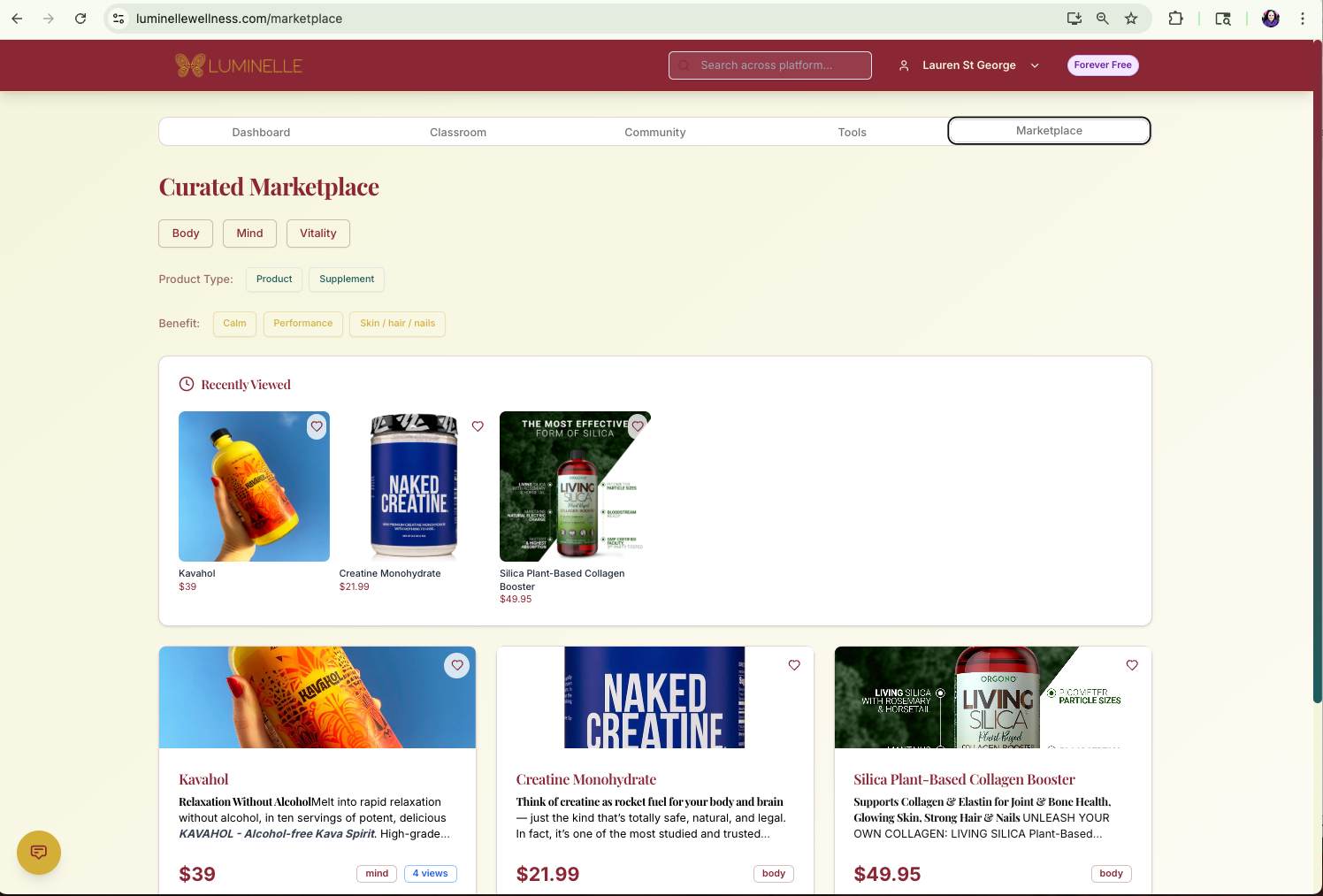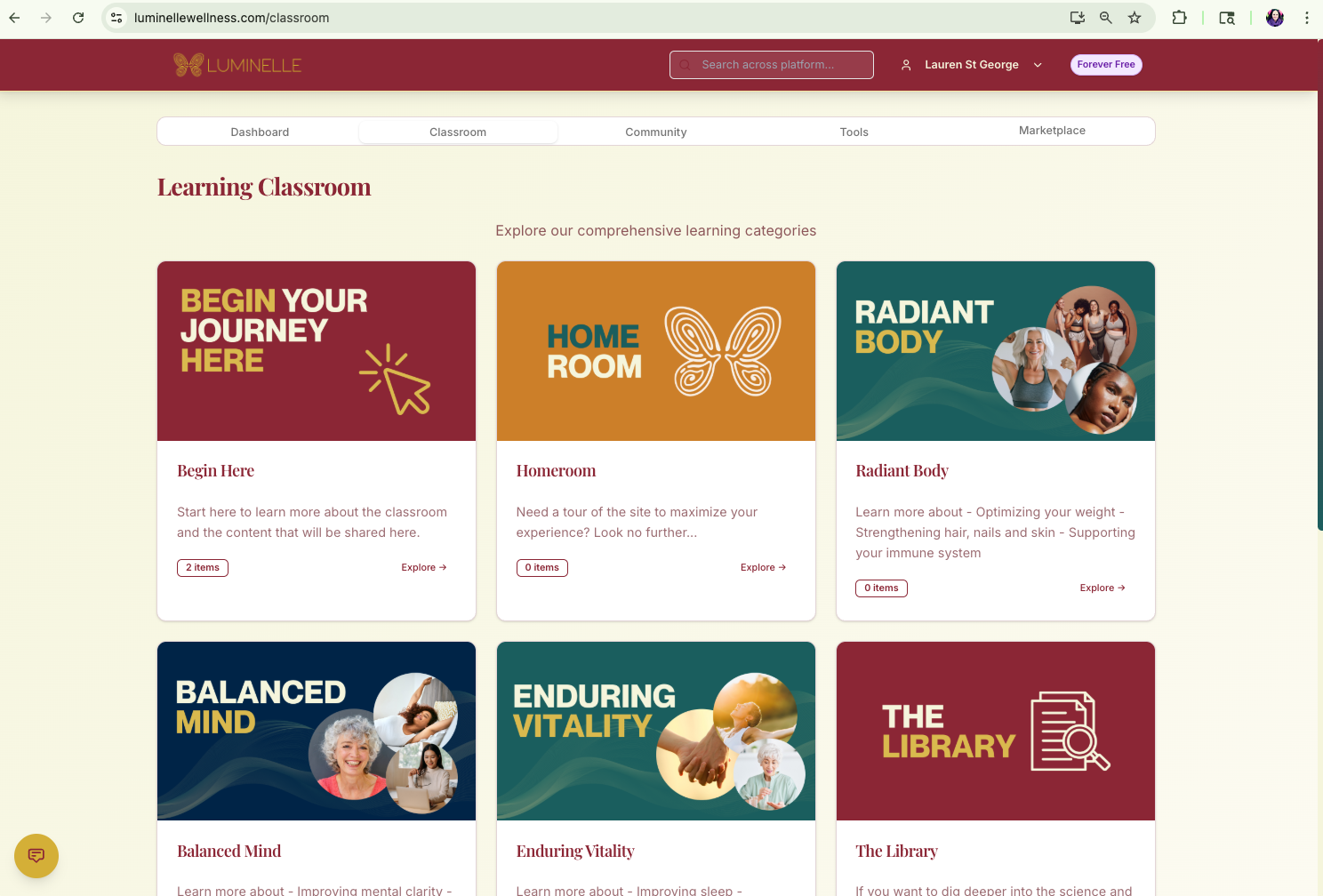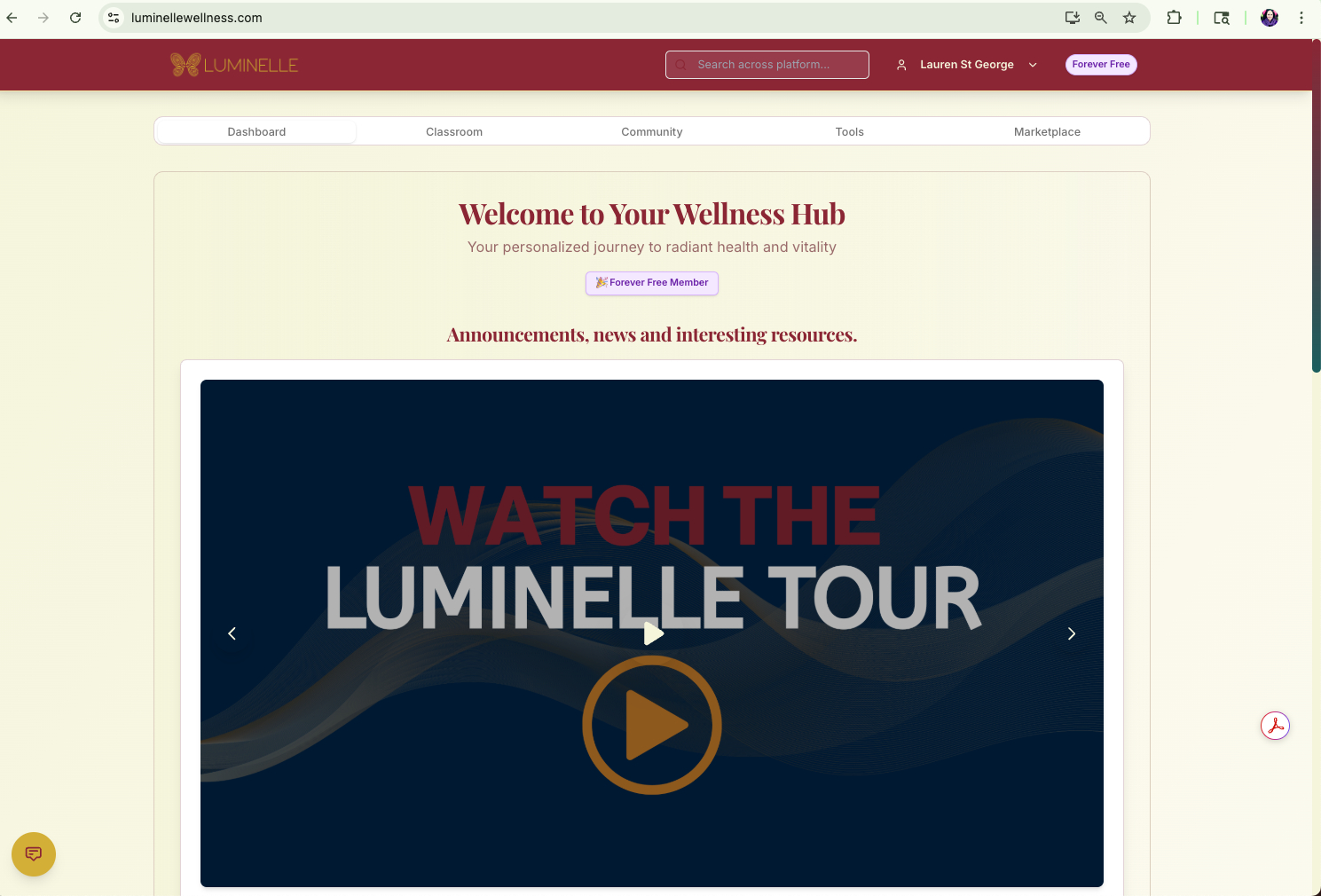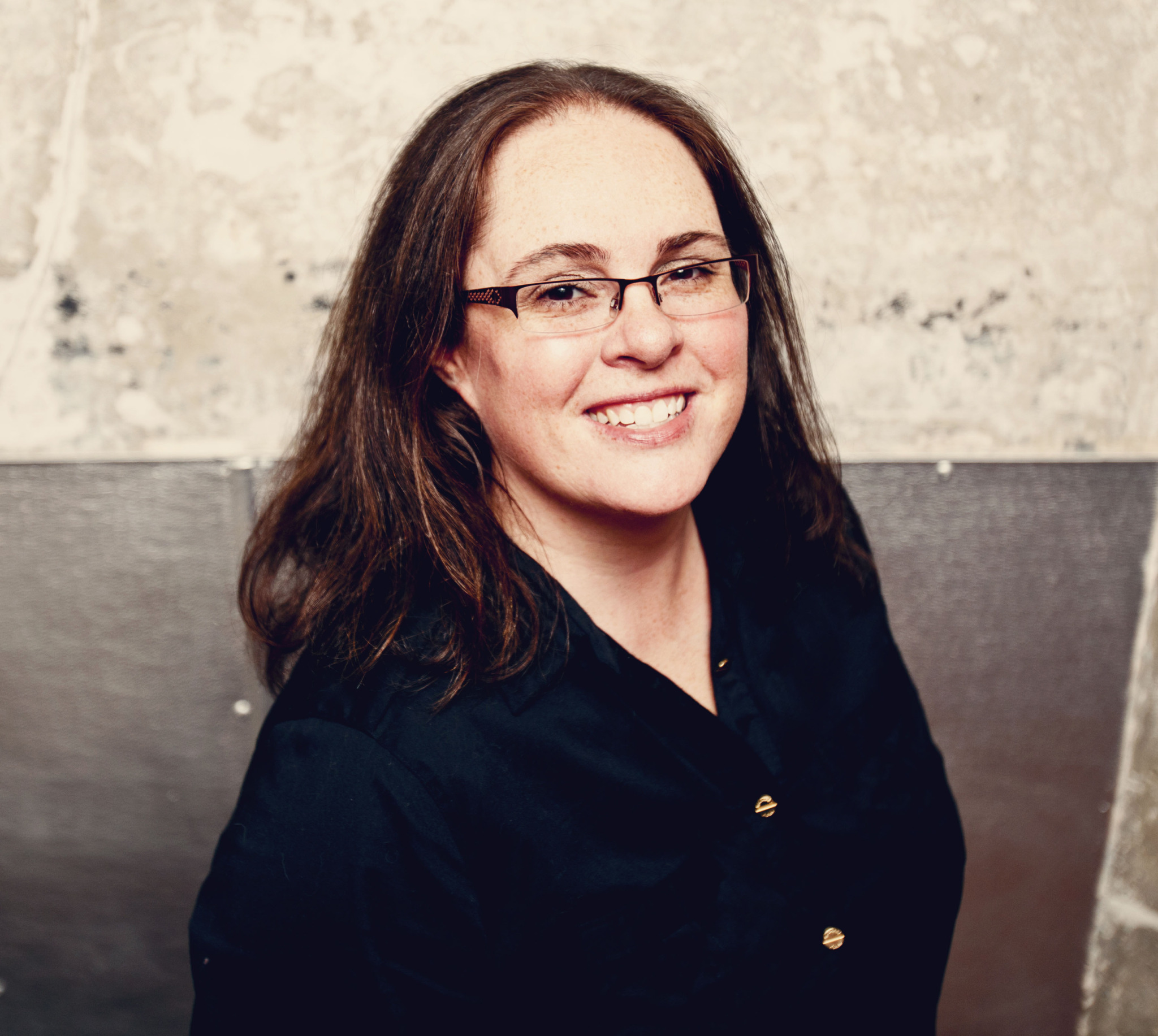Alright – so today we’ve got the honor of introducing you to Lauren St George. We think you’ll enjoy our conversation, we’ve shared it below.
Lauren, thanks for joining us, excited to have you contributing your stories and insights. Do you wish you had waited to start your own firm or do you wish you had started sooner?
Timing is everything — especially when you’re building something that serves a new niche or introduces a fresh solution. Start too early and you’ll spend a lot of time educating people about why your idea matters. Start too late and you’ll find yourself fighting for space in a crowded market.
I’ve experienced both sides. My newest venture feels well-timed — the market signals are starting to pop up, and I’m seeing other players emerging, which tells me the concept has traction. But it’s not yet saturated, which means there’s still room to shape the category.
The trick is learning to read the signs. A few tools and approaches I rely on:
Search trends & social chatter: Tools like Google Trends, Exploding Topics, and even Reddit or TikTok discussions show you what’s bubbling up in real time.
Competitor mapping: If you’re seeing more thought leaders and startups appearing in your niche but the market isn’t mainstream yet, that’s often your sweet spot — early but not alone.
Customer curiosity checks: Talk to your potential audience early. If they’re intrigued but not yet overwhelmed with options, that’s a good sign you’re ahead but not too far ahead.
Pilot before you plunge: A small beta or soft launch can reveal if the market is ready — and lets you pivot fast if it’s not.
Even after you launch, timing continues to matter. You have to keep evolving your brand to stay relevant as the market catches up. I learned that lesson back in 2012 when we I wanted to add more digital services to our creative agency — my business partner did not, and we were quickly outpaced. Innovation isn’t just about starting at the right time; it’s about staying current as time moves on.

Great, appreciate you sharing that with us. Before we ask you to share more of your insights, can you take a moment to introduce yourself and how you got to where you are today to our readers.
I’ve spent most of my career helping others build what’s next — from global brands like Coca-Cola and Virgin to fast-growing startups and purpose-driven nonprofits. My work has always lived at the intersection of creativity, strategy, and human behavior. I help teams see what’s changing in the world and design experiences that connect on a deeper level.
But over time, I noticed a pattern — especially among women my age. We were helping everyone else grow while quietly losing energy, focus, and confidence in our own bodies. And when we went looking for solutions, what we found were two extremes: the “just age gracefully” narrative or the “biohacker bros with needles and spreadsheets” crowd. Neither felt like home.
That’s where Luminelle began.
I started exploring the science behind natural alternatives like, nootropics, and less known about supplements — not from a place of “fixing” what’s broken, but from curiosity about how we can remind our bodies to do what they already know how to do. I realized that many of the changes women experience after 40 aren’t failures — they’re simply responses to shifting hormones, metabolism, and cell signaling.
So I built Luminelle around three pillars — Radiant Body, Balanced Mind, and Enduring Vitality — to help women navigate those shifts with knowledge, curiosity, and confidence. It’s part classroom, part community, part marketplace — a space to learn, experiment, and feel supported while we explore tools that help us feel vibrant again.
Timing-wise, I think Luminelle is landing right where it should. A few years ago, it might have been too early — people weren’t ready to talk openly about bio-optimization never mind women in perimenopause and beyond. But now, I’m seeing others enter the conversation, and that tells me the market is ready.
In many ways, Luminelle is the culmination of everything I’ve done — the storytelling of brand strategy, the curiosity of design thinking, and the desire to empower women to take charge of their own next chapter.
How do you keep in touch with clients and foster brand loyalty?
Staying top of mind without being intrusive is a balancing act — it’s about adding value rather than just adding noise. The best approach is to build a rhythm of meaningful touchpoints that make clients feel seen, supported, and part of something ongoing — not just sold to.
Some of the most effective strategies include:
• Consistent, useful communication: Regular updates, insights, or inspiration that genuinely help your audience, not just promote your services.
• Personalized check-ins: Remembering milestones, anniversaries, or project completions — small gestures that show you value the relationship.
• Community or event engagement: Hosting live sessions, Q&As, or workshops keeps the connection human and the brand approachable.
• Feedback loops: Creating spaces for clients to share ideas and experiences turns them into co-creators, not just customers.
For a past client of mine, a high-end renovation company:
I have led brand and marketing strategy for a local high-end design build firm – for them it is about nurturing long-term trust. We focus on maintaining relationships beyond the project itself — sharing design trends, new home inspiration, and project spotlights that remind past clients of the value of great craftsmanship. Monthly newsletters, design showcases, referral gifts of gratitude and “client appreciation” updates keep the brand relevant without overwhelming inboxes.
We also use key touchpoints like project anniversaries (“One year since your renovation!”) and behind-the-scenes content from current builds — all designed to remind clients why they loved working with us in the first place.
For my new business, Luminelle:
Luminelle is more community-driven. It’s about creating an interactive space where women can ask questions, share experiences, and get quick, informed responses directly from me and our team. That means staying active in the community discussions, producing content that feels both educational and relatable, and hosting live sessions where members can connect face-to-face.
We’ll also build in gentle, thoughtful touchpoints — weekly newsletters with science-backed updates, event invitations, and anniversary messages that celebrate members’ wellness journeys. The goal is to make every woman feel part of something evolving and responsive — not another faceless platform.
Ultimately, brand loyalty comes from feeling connected. Whether it’s through a beautifully finished home or a renewed sense of vitality, people stay loyal when they feel that you care, you listen, and you keep showing up with purpose.

Learning and unlearning are both critical parts of growth – can you share a story of a time when you had to unlearn a lesson?
We all have this built-in survival mechanism — the reptilian brain — whose job is to keep us safe. It’s the oldest part of our brain, and it’s not particularly evolved for modern creativity. It reacts fast, scanning for threats and saying “no” to anything uncertain, uncomfortable, or unfamiliar. That’s great if you’re trying to avoid a tiger. Not so great if you’re trying to innovate.
As a creativity expert, I’ve seen this in myself and in every team I’ve ever worked with. Someone suggests a new idea — and before we’ve even had a chance to explore it, our brain whispers, “That won’t work.” We dress it up in logic — “It’s too soon,” “We tried that,” “Our clients won’t go for it” — but really, it’s fear wearing a sensible hat.
The trick is learning to catch that reflex especially in myself. I started practicing what I teach: pause the “no,” get curious, and let the idea breathe for just a few minutes longer. That’s often where the breakthrough lives — just beyond the initial resistance.
Once I learned that, everything changed. I stopped waiting for perfect conditions and started saying “yes” more — to experiments, to ideas that made me nervous, to things I wasn’t quite ready for. That’s how some of my best work (and now, ventures like Luminelle) came to life.
You can’t innovate if your brain is stuck in survival mode. The magic happens when you retrain it to see curiosity as safety.
Contact Info:
- Website: https://www.luminellewellness.com
- Linkedin: https://www.linkedin.com/in/lauren-stgeorge/



